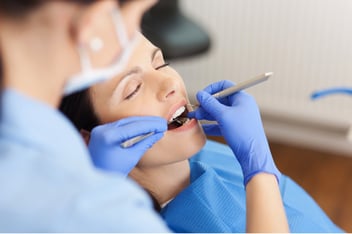When considering a straighter smile with orthodontics it is important to make an informed decision about your options. Straightening your smile can do many things that benefit your oral health and your smile. A straighter smile can help correct bite alignment problems, make your smile more symmetrical, improve the appearance of your teeth and smile, and can prevent cavities by making brushing and flossing easier in crowded teeth.
What is Invisalign?
Invisalign is a specific brand of removable clear aligners that can address most alignment issues. They are custom made sets using a precise 3D model of your teeth to achieve your smile goals.
How does Invisalign work?
The aligners apply pressure consistently on the wearer’s teeth. The aligners typically connect to small ridges that are attached to specific teeth, called attachments. The aligners pair to these with corresponding bumps. If aligners are worn for 20-22 hours per day the patient’s teeth are straightened in micro-increments with each aligner in the series custom-made for each patient. A patient will have several different aligners that make these small but significant changes until their desired smile is achieved. Each aligner is generally worn for between 1 and 2 weeks and the amount of aligners needed varies depending on the amount of dental shift that is needed for the desired smile. Some programs can take mere months and can take up to two months if significant movement is needed, however this is often about the same duration of time as traditional braces.
How Much Does Invisalign Cost?
The cost of Invisalign can range anywhere from $3,000 to $7,000. The price is dependent on the severity of a person’s dental condition and ultimate goal. At the end of the day, Invisalign and traditional braces cost nearly the same.
Pro’s and Cons of Invisalign
Clear look that can be more aesthetically pleasing to some during straightening process. Alignment trays can be removed and often leads to less plaque buildup and better care of teeth during the alignment process. You can utilize backup trays if a tray breaks or cracks so there is no need for emergency orthodontic appointments to fix an issue. However, Aligners must be cleaned and cared for properly every day. If a patient forgets to reapply their aligner even by a few hours, it can set their progress back. Invisalign cannot correct all complicated orthodontic issues, such as impacted teeth.
Pros and Cons of Traditional Braces
Traditional braces have been around for about 100 years so they are a tried and true method to fix alignment issues. Traditional braces often can fix major alignment issues, especially those below the gumline, that Invisalign may not be able to address. Although you may misplace an Invisalign tray it is impossible to do so with traditional braces. You can also change the bands on traditional braces to different colors at an orthodontic appointment. The appearance of braces can be a downside for some people. Often the initial process of putting on braces can cause more discomfort. Food can easily get stuck in braces more than on Invisalign attachments, plaque and bacteria can build up on teeth, leading to marks on the teeth when braces are removed, and the braces can not be removed so it requires diligent care. Sticky or hard foods (such as popcorn kernel) can easily break or bend the wire or damage the braces, leading to discomfort and prolonged treatment times. The cost of traditional braces are typically about the same as Invisalign for the patient.
If you would like to have a dentist evaluate your smile for Invisalign and other options give us a call today!
.png?width=80&height=80&name=Clove%20Dental%20White%20Small%20(28).png)


